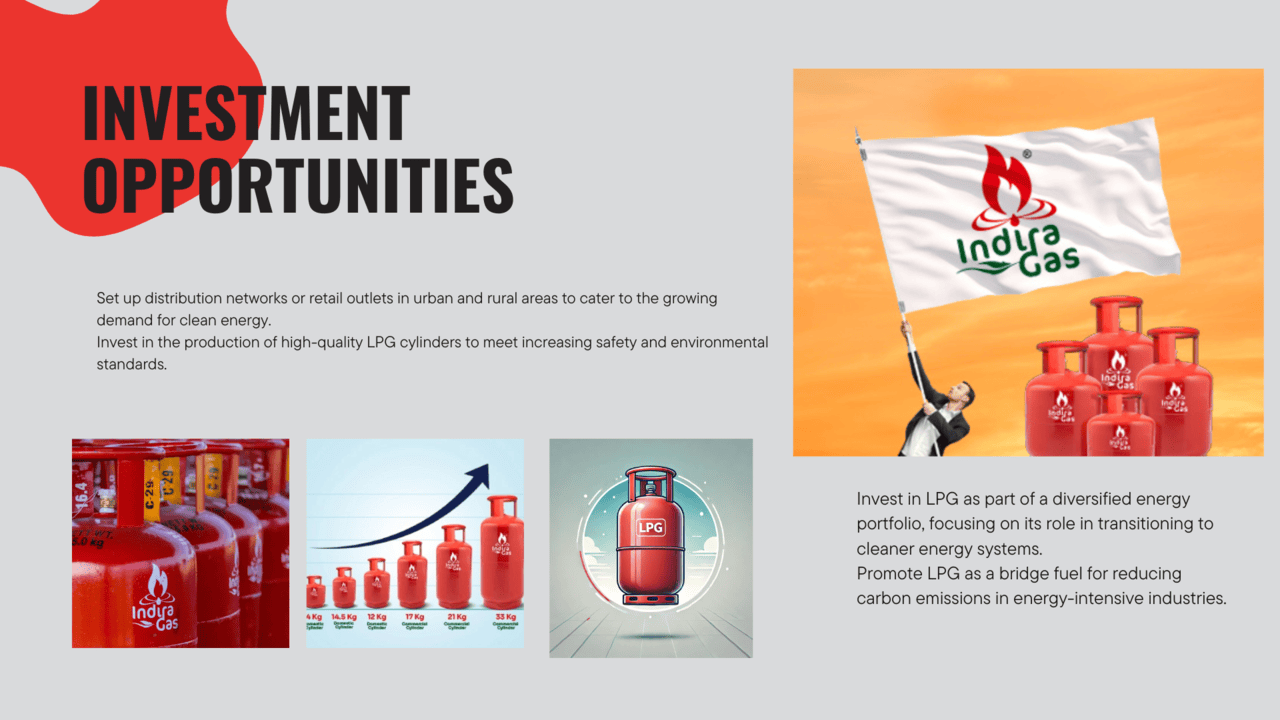Investment Opportunities in LPG for 2025

Introduction
Liquefied Petroleum Gas (LPG) has long been a cornerstone in the global energy landscape, serving as a versatile fuel for residential, commercial, and industrial applications. As the world intensifies its focus on cleaner energy sources and sustainable practices, LPG continues to play a pivotal role in the energy transition. The year 2025 presents a landscape rich with investment opportunities in the LPG sector, driven by technological advancements, policy shifts, and evolving market dynamics.
1. Global Market Outlook for LPG
• Market Growth Projections: The global LPG market has demonstrated consistent growth, with volumes reaching approximately 341.31 million metric tons in 2024. Projections indicate a compound annual growth rate (CAGR) of 1.4%, anticipating a rise to 387.14 million metric tons by 2034.
• Regional Demand Dynamics: Asia-Pacific remains a dominant consumer, propelled by rapid urbanization and industrialization. Notably, countries like India are experiencing increased demand, with significant investments in LPG infrastructure to meet the growing needs.
2. Emerging Investment Opportunities
• Infrastructure Development: The expansion of LPG storage and distribution networks is paramount. Regions such as East Africa are positioning themselves as future LPG hubs, with plans to enhance storage facilities and distribution channels to meet rising energy demands.
• Technological Innovations: Advancements in LPG applications, including integration with renewable energy systems and the development of more efficient appliances, are creating new avenues for investment. The industry's commitment to innovation is evident in the adoption of technologies that improve energy efficiency and environmental performance.
• Renewable LPG (BioLPG): The shift towards sustainable energy has spotlighted BioLPG, a renewable counterpart to conventional LPG. Investments in BioLPG production facilities are gaining traction, aligning with global decarbonization goals and catering to the environmentally conscious consumer base.
3. Policy and Regulatory Landscape
• Government Initiatives: Many governments are implementing policies to promote cleaner fuels, including LPG, to reduce carbon emissions. Incentives such as subsidies, tax benefits, and grants are being introduced to encourage investments in LPG infrastructure and technology.
• Environmental Regulations: Stricter environmental standards are driving the adoption of cleaner energy sources. LPG, with its lower carbon footprint compared to traditional fossil fuels, is well-positioned to benefit from these regulatory changes, making it an attractive investment option.
4. Investment Risks and Considerations
• Market Volatility: Fluctuations in global oil and gas prices can impact LPG markets. Investors should conduct thorough market analyses and consider hedging strategies to mitigate potential risks associated with price volatility.
• Infrastructure Challenges: Developing LPG infrastructure, especially in emerging markets, may face challenges such as regulatory hurdles, logistical issues, and the need for substantial capital investment. A comprehensive risk assessment is essential before committing resources.
• Technological Uncertainties: While technological advancements present opportunities, they also come with uncertainties. Investors should stay informed about emerging technologies and be prepared to adapt to rapid changes in the energy landscape.
5. Strategies for Potential Investors
• Diversification: Investing across various segments of the LPG value chain, including production, storage, distribution, and technology development, can spread risk and enhance potential returns.
• Partnerships and Joint Ventures: Collaborating with established players in the LPG industry can provide valuable insights, share risks, and offer access to existing infrastructure and markets.
• Sustainability Focus: Aligning investments with global sustainability trends, such as renewable LPG and energy-efficient technologies, can position investors favorably in a market increasingly driven by environmental considerations.
6. Case Studies and Success Stories
• East Africa's LPG Expansion: East Africa is set to become a significant player in the LPG market, with plans to develop infrastructure and increase accessibility. Investments in this region are expected to meet the growing energy demand and reduce reliance on traditional biomass fuels.
• UK's Investment in Renewable Liquid Fuels: The UK LPG industry has announced substantial investments in renewable liquid fuels, demonstrating a commitment to transitioning towards sustainable energy solutions. This move is expected to drive growth and innovation in the sector.
Conclusion
The LPG sector in 2025 presents a dynamic landscape with numerous investment opportunities. Driven by global energy transitions, technological innovations, and supportive policy frameworks, LPG continues to be a vital component of the energy mix. Investors with a keen understanding of market dynamics, a focus on sustainability, and a strategic approach to risk management are well-positioned to capitalize on the evolving opportunities within the LPG industry.

 Book Connection
Book Connection